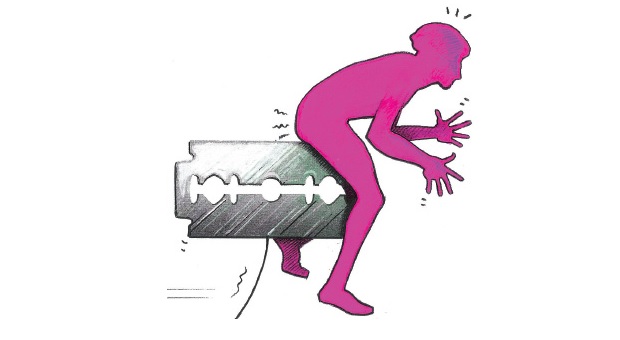No matter how strong your legs, how finely tuned your heart and lungs or how expensive and lightweight your bike, if your backside starts to hurt, both your ride enjoyment and average speed can plummet.
Fortunately, when saddles sores do occur, there are some simple ways to treat them and avoid a recurrence.
Diagnose
The term “saddle sore” can refer to several different specific conditions, but generally it means problems occurring in the area where your cycling shorts’ chamois contacts your body due to ongoing pressure or chafing from your saddle.
“You know you have a saddle sore when you have a tender spot that is usually raised, pink or red and in an area that rubs your saddle,” explains Chatanooga-based gynecologist Kristi Angevine.
For most people, a saddle sore looks like a pimple or an ingrown hair, and essentially, it is the same thing: a bacteria-filled pore. In sensitive areas like in or on the back of your thighs or in your crotch, saddle sores can really hurt, making riding downright unpleasant.
How to treat saddle sores
Treating saddle sores isn’t easy when there are a variety of symptoms, as mentioned above. Although there are some general guidelines that you can follow to help treat them. If you are concerned about sores, irritation or cysts, always seek the help of a healthcare professional.
Keep it clean. If you have sores, irritation or abrasions, you want to keep your undercarriage as clean as possible. Quick rinses and hot showers with no fragrance soaps help reduce bacteria and sweat making the problem worse.
See a Doctor. If your saddle sores keep coming back, you might want to talk to a dermatologist to see if your sensitive skin has an underlying problem.
Secondly, consult your doc if your saddle sore lasts for more than two weeks or is excruciatingly painful. There could be something else going on.
Last but not least, go to a doctor if your saddle sore gets infected. Saddle sores sometimes get infected if the skin is broken and bacteria get inside. Signs of infection include serious pain, pus, a fever, and chills; those symptoms might mean it’s time for antibiotics.
Prevent
It’s essential that your bike is well fitted. Incorrect saddle height and handlebar height/reach can cause your weight to be poorly distributed or lead to excessive rocking in the saddle both of which can contribute to discomfort.
Just as important as your saddle is your choice of chamois, since this is your skin’s first point of contact. A chamois which is perfect for one rider might not suit another, but generally speaking, more expensive shorts use better quality material and have had more thought put into the design and shape. Look for a chamois with few or no seams, so that there is less friction against the skin.
Even on flat rides, try to stand up out of your saddle every 10-15 minutes to give your backside a bit of a break and to restore some blood flow.














